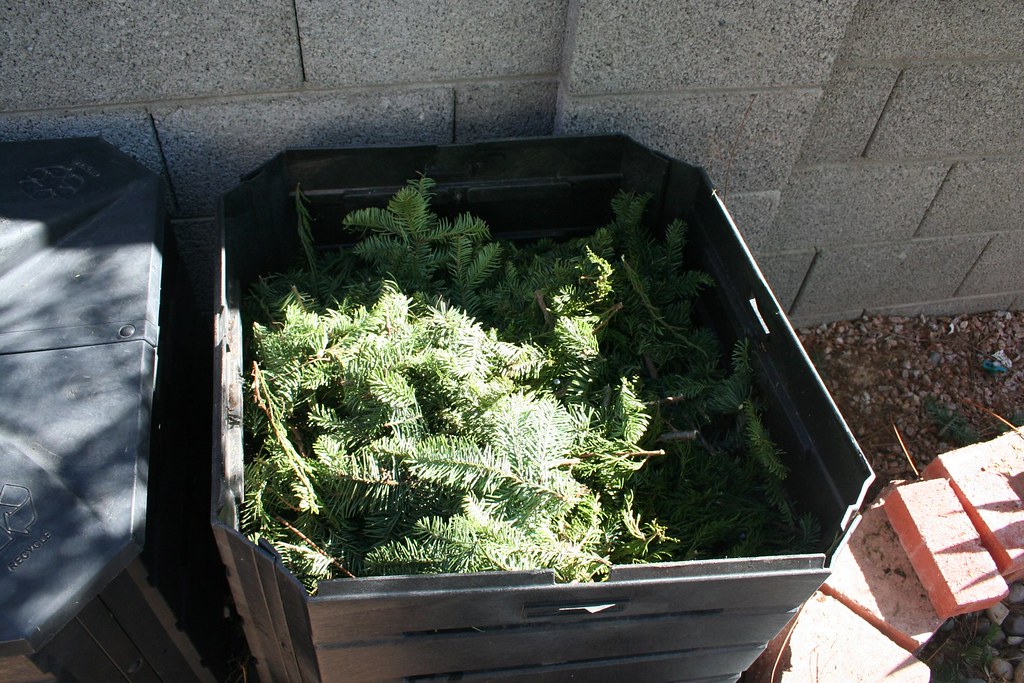Deserts are notoriously harsh environments. Hot and dry (excluding Antarctica), with low rainfall, desert soils are challenging for most plants and take years to naturally build fertility. Deserts are found on multiple continents, from Australia to the Desert Southwest in the USA.
Compost is an excellent soil amendment and a powerful way to enrich impoverished soil. But as compost requires moisture and plenty of organisms, is it possible in the desert? The answer is yes—with a few adaptations. With some extra shade and water, you can produce nutrient-rich compost in even the most inhospitable of deserts.
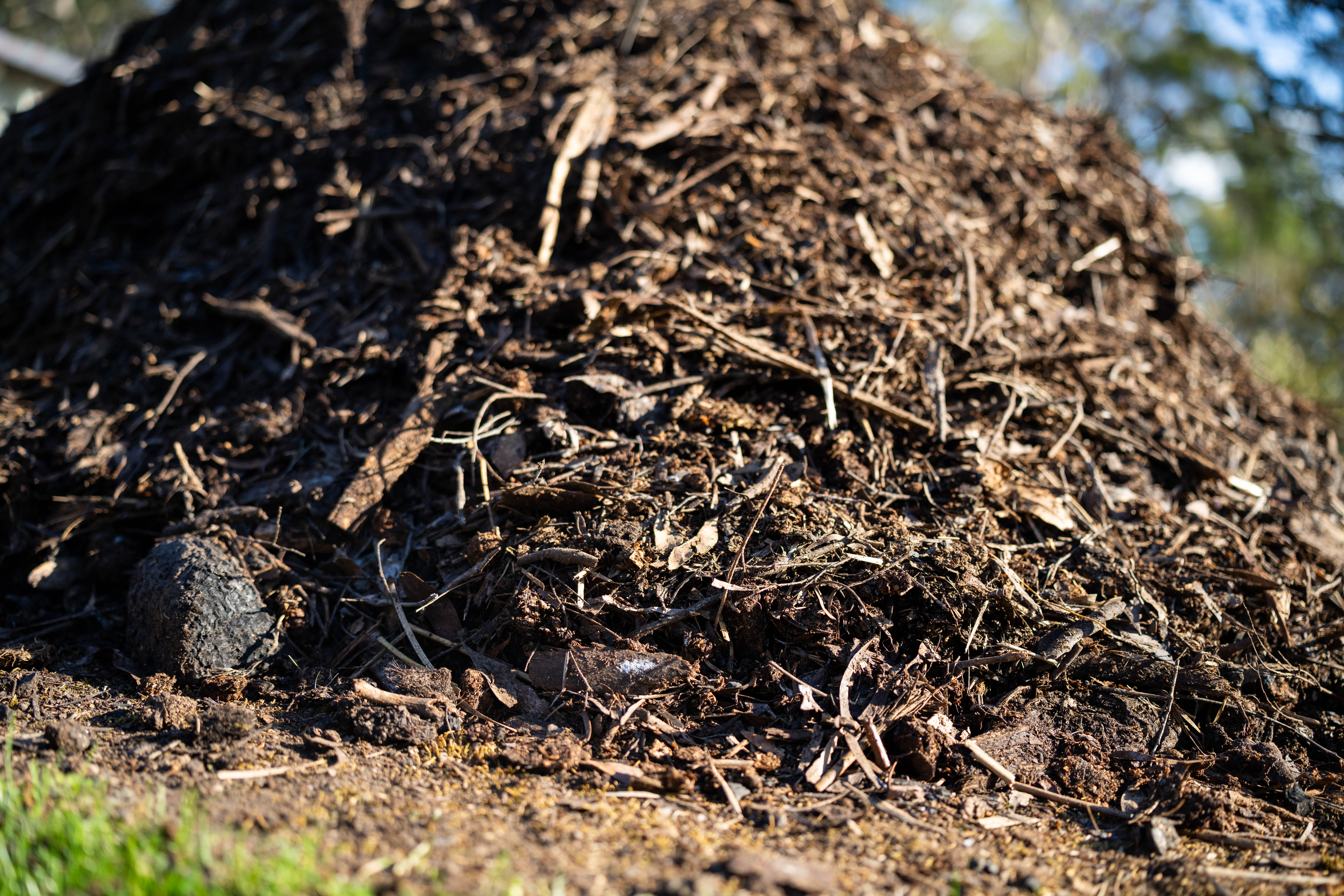
The Desert Environment
To compost effectively, it helps to understand the nuances of desert conditions. Arid and harsh as they are, conditions can vary dramatically across desert environments. In the Desert Southwest of the USA, for example, there are over six major biomes, from extreme arid to high mountain deserts, to milder subtropical valleys and vast mountainous expanses. Many plants will grow across multiple biomes, and while they can survive the harshest conditions, they thrive even more under optimal ones.
Generally speaking, most desert plants are adapted to low-nutrient, sandy soils that drain quickly. While compost can promote lush green growth, many desert plants may flower less if the soil is too rich, since arid conditions are what trigger blooming.
We’ll cover when and what to add compost to next.
What and When to Compost
Native cacti and succulent plants do not need compost amendment when being planted or transplanted. That being said, check the ideal soil conditions for the plant. Excessively sandy soil will benefit from some compost around the root zone to hold more water for longer, and heavy clay or caliche soils will benefit from the air and water pockets it will add.
Most non-native plants will require compost when planting, and yearly additions to increase the nutrient levels around the plants. Vegetable and flower beds adore plentiful additions of compost, and this, combined with good mulching, will lower your water bill, too.
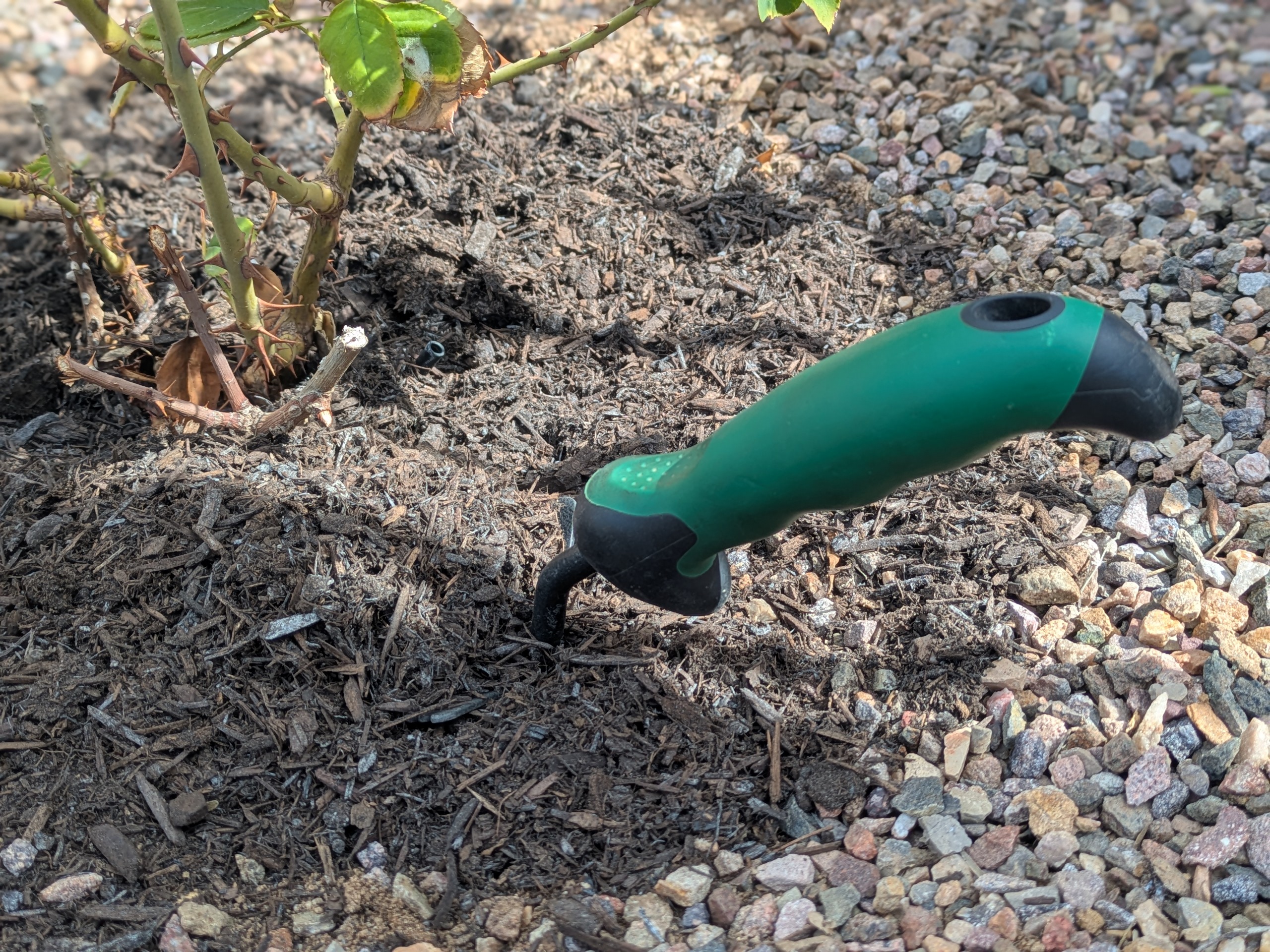
A light compost amendment each year for native plants will help them weather challenging conditions and put down stronger roots. The exception for this would be cacti and succulents; they do very well on their own.
Composting in the desert is best done in the fall, after the long, hot summer. This allows plants to recover from extreme heat and lets nutrients settle into the soil over the cooler, wetter winter months. Adding around 10-20% mix to the general growing zone is plenty, and will keep the conditions on the scarce side, which most plants prefer. Mixing in pebbles or gravel in small quantities can keep the soil draining well, too.
Most desert plants do not need special fertilizers or amendments. For most situations, compost has the right mix of nutrients for the desert plants that need it.
Starting your Desert Compost
Desert soil is, despite how it looks, incredibly high in microorganisms and fungi, and these are essential nutrient recyclers. A few shovelfuls of desert soil will provide your compost pile with all of the organisms you need to get going.
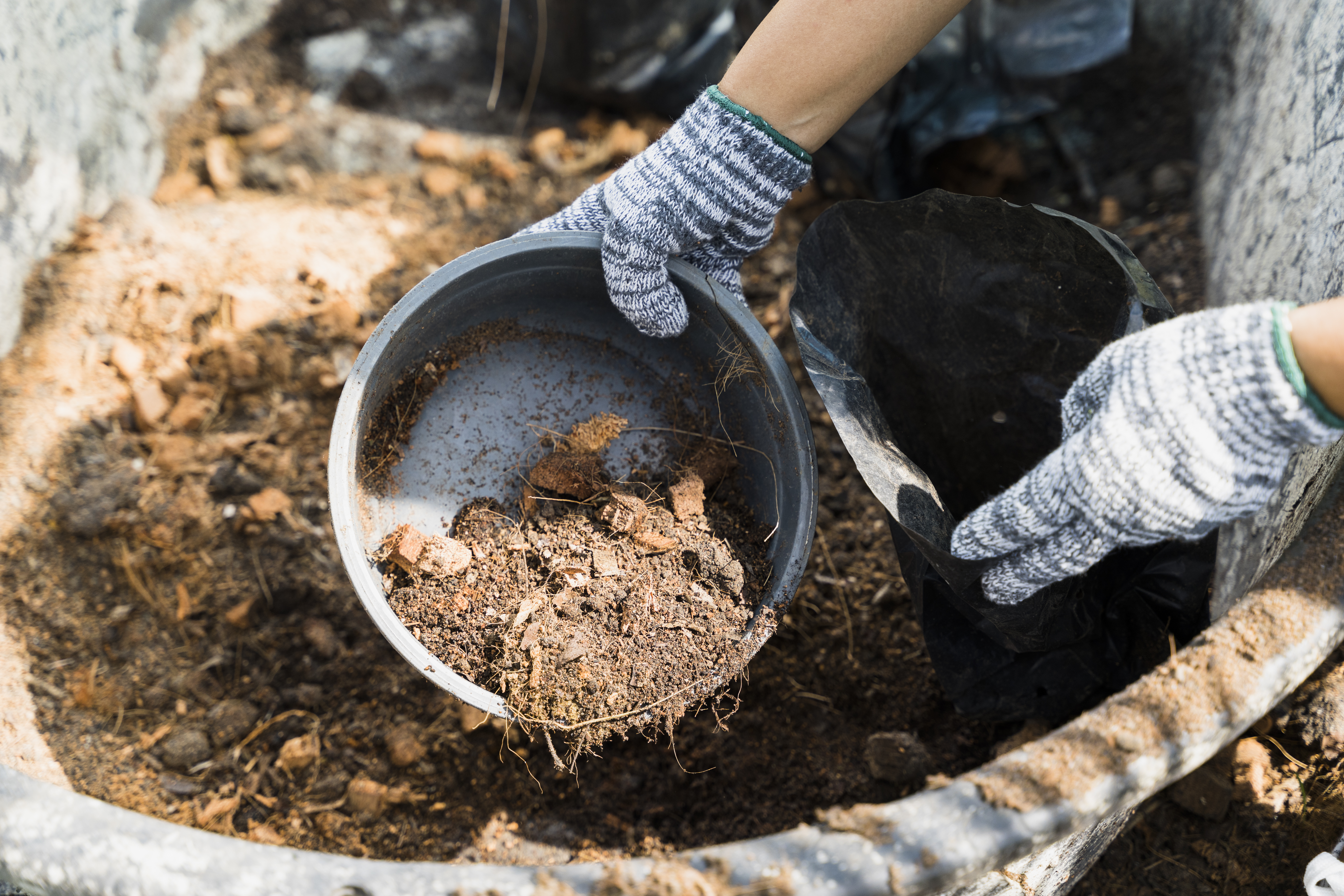
The Container
Next, choose your compost setup. You can use a closed container, like a large bucket or repurposed trash bin with holes drilled for airflow. Many Arizona municipalities, for example, offer old bins for this purpose.
Alternatively, you can create an open pile under some shade. Open piles allow monsoon rains to naturally add moisture, but they require a bit more hands-on maintenance to keep the pile active. A permeable shade cloth is a good cover.
Compost bins don’t need to be expensive or complicated to make compost. The structure should keep birds, dogs, cats, and other animals out, while allowing easy access for adding more material and turning. A good bin allows for gas exchange and drainage.
Recycled wooden pallets marked with HT (heat-treated) can be attached with hinges to create an effective compost bin. Old tin sheets, chicken wire mesh, and more can be recycled into a perfectly good solution.
The optimal size for a bin or pile is 3 ft x3 ft x3 ft to 4 ft x4 ft x4 ft. This balances temperature, airflow, and ease of maintenance well.
Water
The compost pile should be kept damp throughout the year. It should be around 40-60% water weight overall and will feel like a barely damp sponge. During the summer, weekly misting from the hose may be needed, or decomposition will slow down.
To reduce water consumption, you can add waste coffee or tea water to the pile, unsalted water used for cooking, or that leftover water in your bottle that might be a little old to drink.
Avoid using water with salt, soap, or other contaminants.
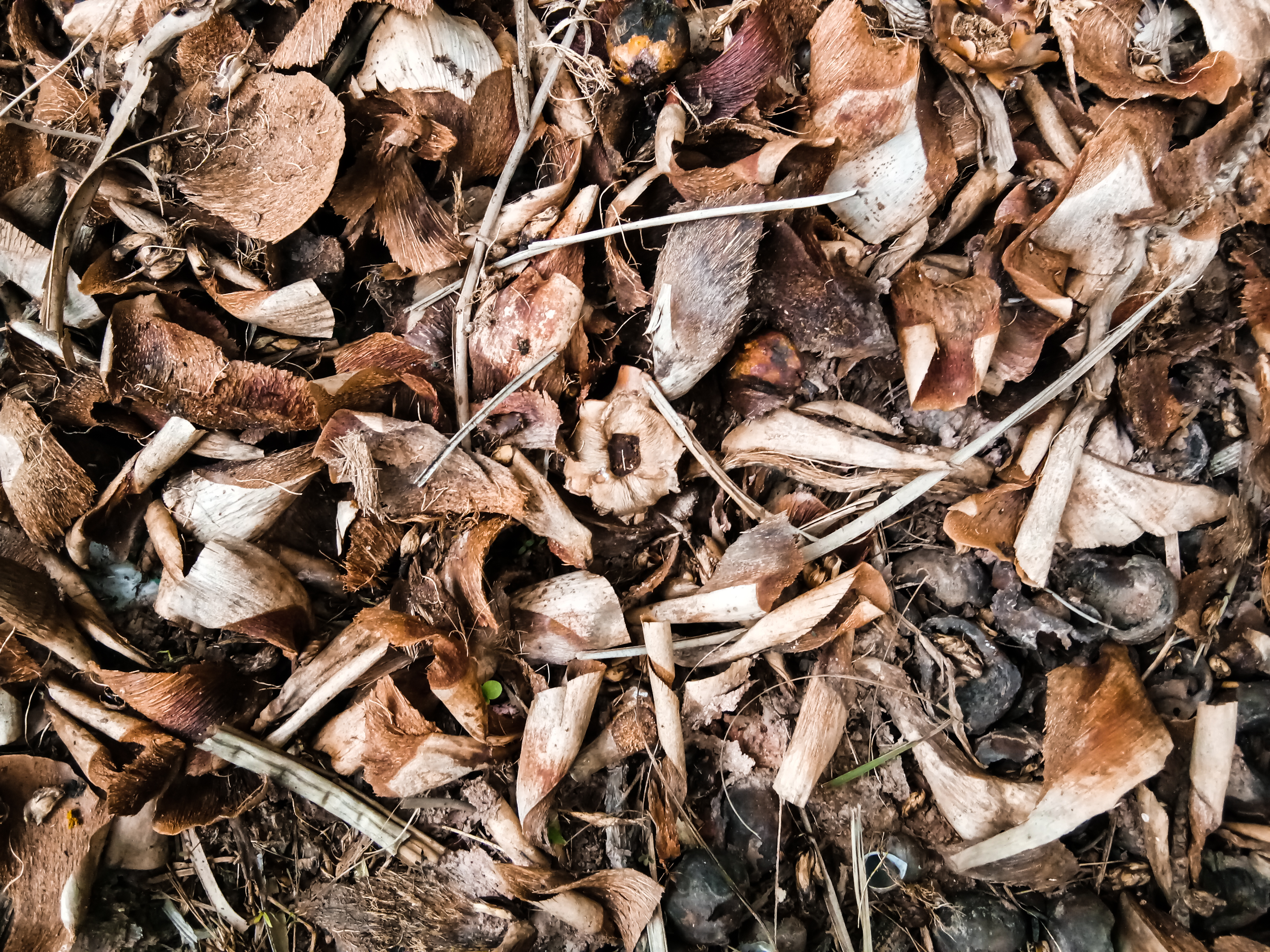
Materials
Most organic kitchen and garden waste can be composted. Aim for a balance of “browns” and “greens” to maintain a healthy 20:1 carbon-to-nitrogen (C:N) ratio.
Browns (carbon-rich):
- Dry leaves
- Straw or hay
- Sawdust or wood shavings (in limited amounts)
- Twigs and small branches
Greens (nitrogen-rich):
- Vegetable peelings
- Fruit scraps (in moderation)
- Spent flowers
- Coffee grounds
- Unscented, unsalted tea or coffee water
Tips:
- Keep woody materials low overall, as they sequester nitrogen until they fully decompose.
- Chop or shred larger items to speed decomposition.
- Avoid materials with disease, pesticides, or heavy salt content.
The EPA has good reference tables for common compostable materials.
Adding Oxygen
The desert environment will add plenty of heat to your compost pile, so keeping it well aerated is essential to stop the microorganisms from starving. Adding twigs and small branches creates permanent airflow paths, and rigorous weekly ‘turn’ will mix up well-composted material with freshly added materials.
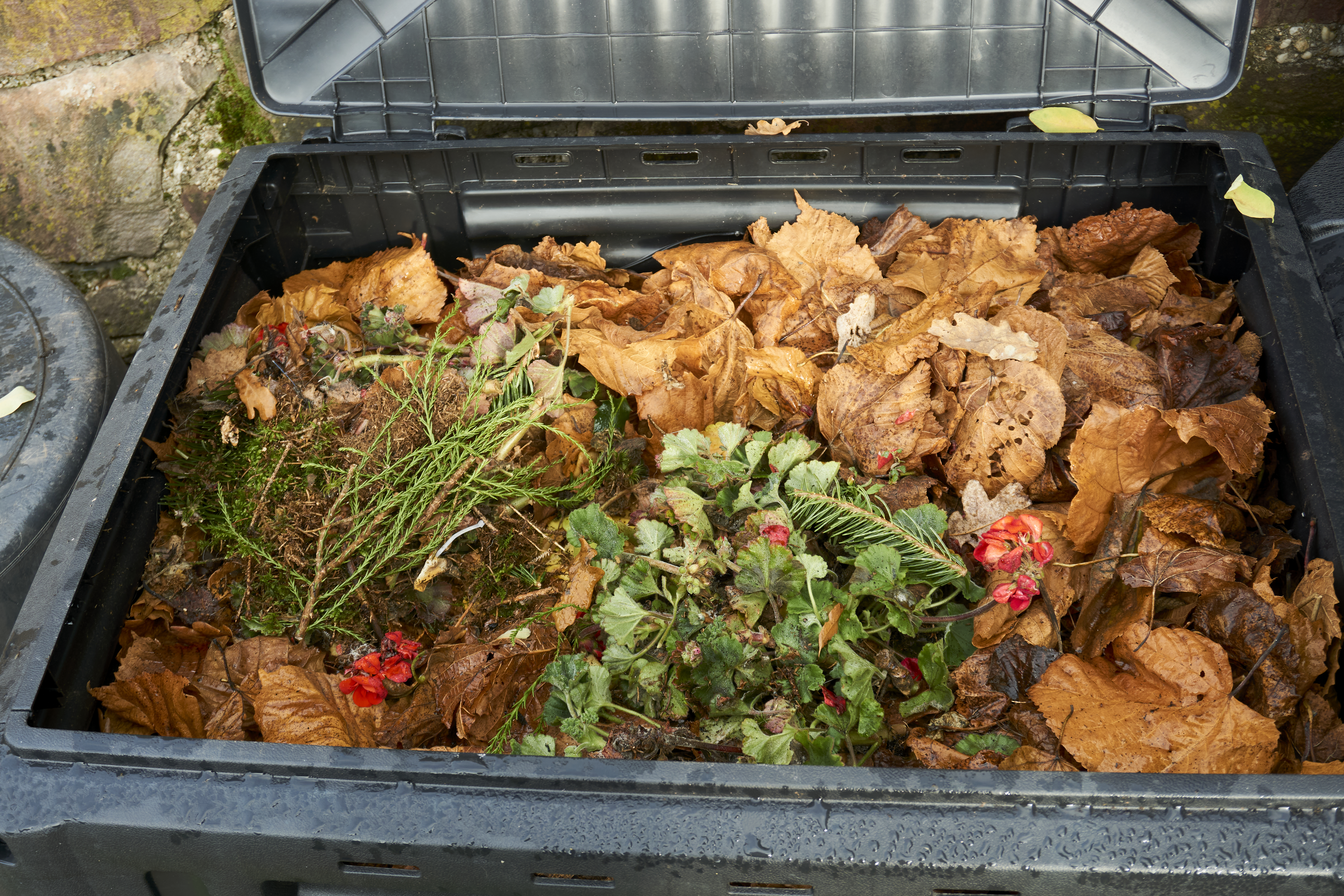
Maintaining Your Compost
Compost piles enjoy being fed, so try to add materials weekly, even if it’s only small amounts. Breaking up additions into smaller pieces increases their surface area, meaning they will decompose faster.
Turning ensures the pile stays mostly aerobic, preventing unpleasant odors and speeding decomposition. As you turn the pile, add water so that it is more consistently damp.
Your compost is ready when the material is a dark, earthy brown with a sweet smell. It should have reached an internal temperature of 130°F for at least 7 days to kill off any harmful organisms. This is easy to achieve in the desert heat.
Key-Point Roundup
- Use desert soil to jump-start your pile: A few shovelfuls provide essential microorganisms and fungi.
- Choose the right setup: Closed bins retain moisture with less maintenance; open piles under shade benefit from natural rain but need more hands-on care.
- Keep it damp, not soggy: Aim for 40–60% water content—like a barely damp sponge. Avoid salty or contaminated water.
- Balance browns and greens: Aim for roughly a 20:1 carbon-to-nitrogen ratio. Browns = dry leaves, straw, twigs; Greens = kitchen scraps, coffee grounds.
- Aerate regularly: Turn the pile weekly to maintain oxygen flow and speed decomposition. Adding twigs and small branches creates airflow paths.
- Amend wisely: Native desert plants need light annual compost; non-natives and vegetable/flower beds can handle more. Cacti and succulents do not need compost except in rare cases.
- Timing matters: Compost in fall after the summer heat; this helps nutrients integrate into the soil and supports plant recovery.
- Ready when it’s dark and earthy: Compost is finished when it smells sweet, is dark brown, and has been at ~130°F for at least 7 days.
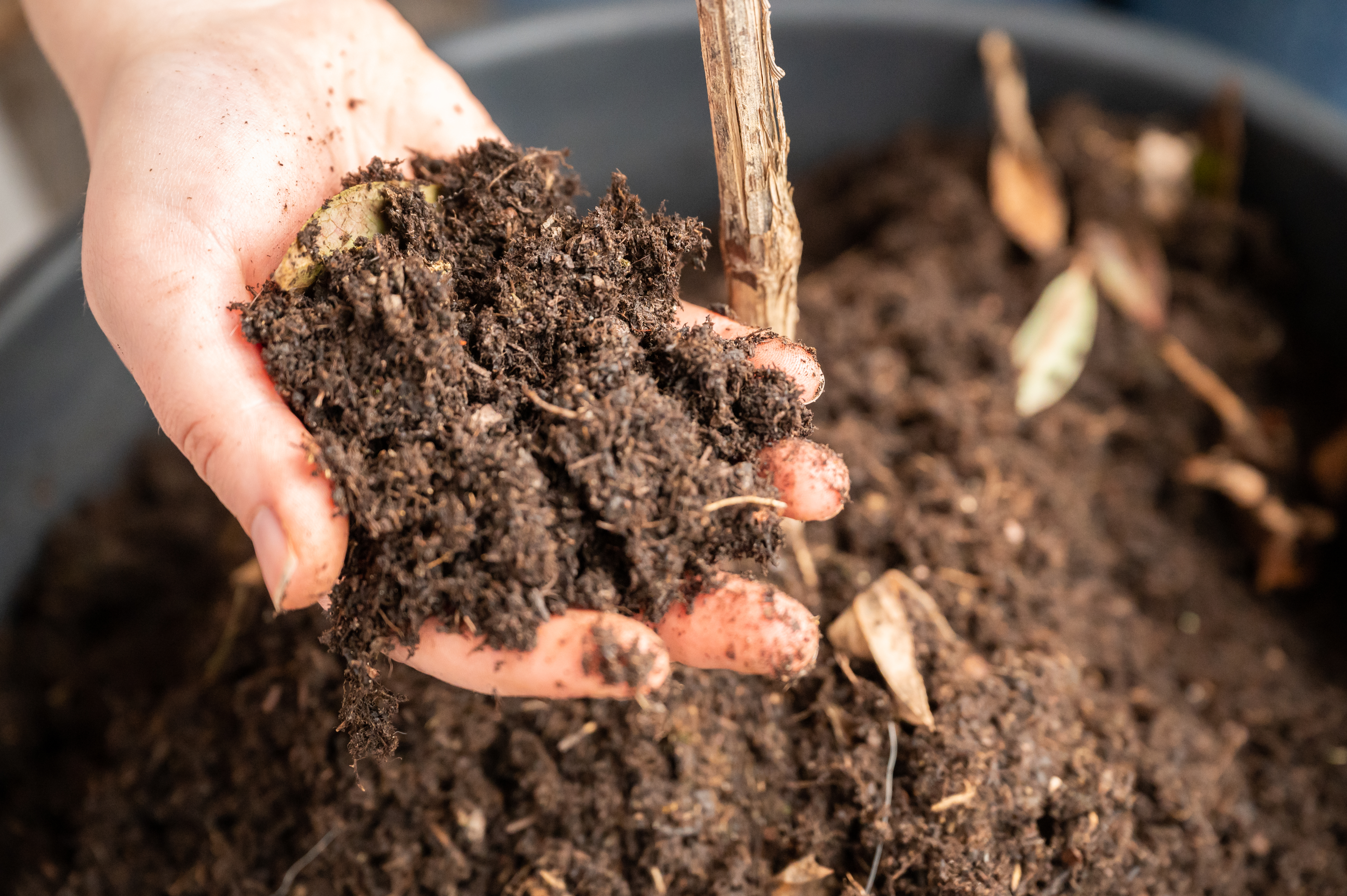
Wrapping Up
With some extra attention, a healthy sprinkling of desert soil, and a steady stream of garden waste, composting in desert environments is almost as easy as in more temperate ones. Keep an eye on moisture levels, and you’ll have a steady supply of rich compost after a couple of years, which will be perfect for a light annual amendment around your plants.
